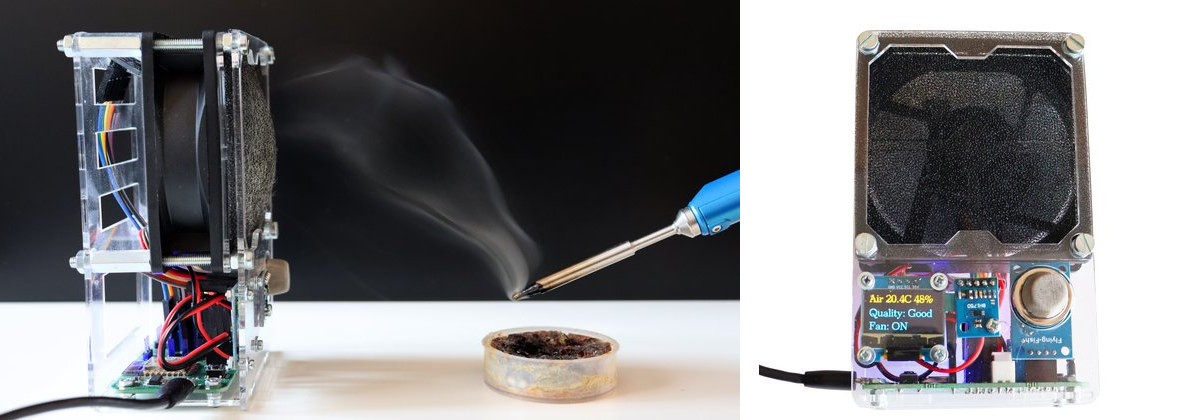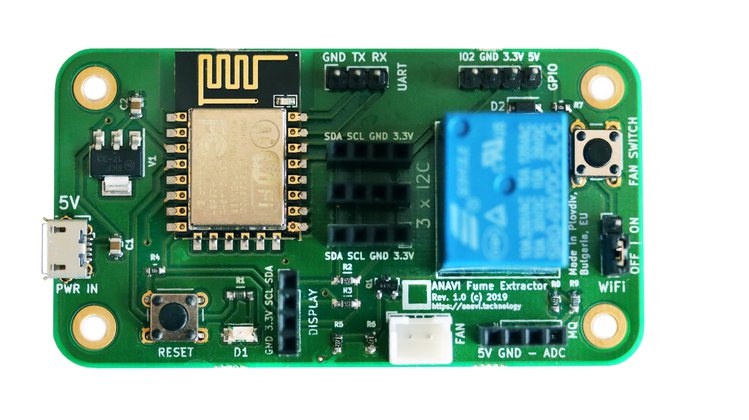Last year, I played with ESP8266 based ANAVI Gas Detector Starter Kit reporting air quality via an MQ135 sensor on an OLED display, and integrated it with Home Assitant to monitor air quality from a neat web dashboard.
The developer, Leon ANAVI, has now adapted the design to create ANAVI Fume Extractor by basically adding a relay to control a control. The fan can be turned on/off manually, or automatically upon detecting bad air quality.

ANAVI Fume Extractor key features and specifications:
- Fan – 80 mm, 5 V DC, 0.25 A with replaceable filter
- SoC – ESP8266 Tensilica L106 32-bit wireless processor
- Connectivity – 802.11 b/g/n Wi-Fi 4
- Display – Mini OLED display
- Sensors – Optional MQ-135 for air quality or any other 5V MQ analog gas sensor
- Expansion – 3x headers for I²C sensors
- Debugging / Programming – UART pins for flashing custom firmware,
- Misc – Button, WiFi on/off jumper
- Dimensions – 129 x 80x 54 mm
- Certification – Open Source Hardware Association (OSHWA) BG000060 – (KiCad hardware design files are available on Github)

ANAVI Fume Extractor has recently launched on Crowd Supply where you can get a starter kit with the fan, two filters, the board, an enclosure and the display for $49, but if you pledge $59 for the advanced kit you’d also get MQ-135 gas sensor and HTU21D temperature & humidity sensor on top. The developer kit further adds a light sensor and a barometric sensor for a total of $69. Shipping is free to the US, adds $12 to $20 to the rest of the world, and deliveries are scheduled to start at the end of October 2020.

Jean-Luc started CNX Software in 2010 as a part-time endeavor, before quitting his job as a software engineering manager, and starting to write daily news, and reviews full time later in 2011.
Support CNX Software! Donate via cryptocurrencies, become a Patron on Patreon, or purchase goods on Amazon or Aliexpress




